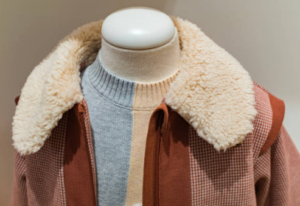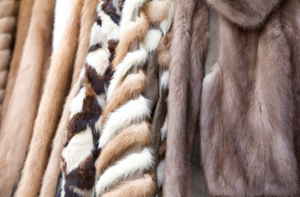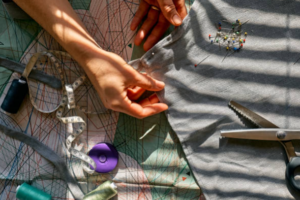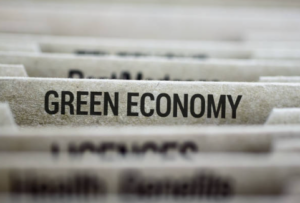Innovations Shaping Ethical Fashion

Fashion is a dynamic and ever-evolving industry, and one of its most significant transformations in recent years has been the shift towards ethical and sustainable practices. While the fashion industry has faced criticism for its environmental and ethical impact, there is a growing movement towards creating fashion that is both beautiful and ethical. Faux fur, once considered a faux pas, is now at the forefront of this change, and technology plays a pivotal role in making it possible. In this blog, we will explore the exciting innovations in faux fur technology and their impact on ethical fashion.
The fashion industry, once synonymous with glamour and creativity, has come under increased scrutiny in recent years due to its significant environmental and ethical challenges. As consumers become more informed and conscious of the impact of their purchasing choices, there is a growing demand for alternatives that align with their values. This shift in consumer mindset has led to the rise of ethical fashion, which places the welfare of animals, the environment, and labor rights at the forefront. Let’s explore why ethical fashion is not just a trend but a necessity in today’s world.
Traditionally, the fashion industry has been closely associated with animal cruelty, particularly in the production of fur and exotic skins. Animals such as minks, foxes, rabbits, and crocodiles have been raised in captivity or hunted for their fur, often enduring inhumane conditions and suffering. The need for ethical fashion arises from a collective desire to end this cruelty.
By opting for alternatives like faux fur, vegan leather, and sustainable textiles, ethical fashion eliminates the demand for these practices. Faux fur, for example, provides a luxurious and cruelty-free option that replicates the aesthetic appeal of real fur without harming animals. The ethical fashion movement recognizes that beauty should not come at the cost of animal suffering.
The environmental impact of the fashion industry is staggering. It is one of the largest contributors to pollution, resource depletion, and waste generation worldwide. The production of textiles, dyeing processes, and garment manufacturing all consume vast amounts of water, energy, and chemicals, leading to soil and water contamination, deforestation, and greenhouse gas emissions.
Ethical fashion is a response to this environmental crisis. It promotes sustainable practices that reduce harm to the planet. Innovations in eco-friendly materials, recycling techniques, and responsible production methods are hallmarks of the ethical fashion movement. By choosing ethically produced garments and accessories, consumers contribute to the preservation of ecosystems and a more sustainable future.
Faux Fur: A Viable Alternative
Faux fur, also known as synthetic fur, has undergone a remarkable transformation over the years, evolving from a once-maligned substitute to a luxurious and ethical choice for fashion enthusiasts. This transformation is driven by several key factors that make faux fur a viable and attractive alternative to traditional animal fur.
One of the primary reasons behind the resurgence of faux fur is the significant improvement in the quality of materials used. Modern faux fur is designed to closely replicate the softness, warmth, and texture of real fur. Several innovative materials have emerged to create a convincing faux fur experience:
- High-quality acrylic: Premium faux fur often relies on high-quality acrylic fibers, which mimic the plush texture of genuine fur. These fibers provide a silky, soft feel and a convincing visual appearance.
- Modacrylic: Modacrylic is another synthetic fiber commonly used in top-tier faux fur production. It is known for its durability, resilience, and resistance to flames, making it a practical choice for creating long-lasting faux fur products.
- Faux shearling: Faux shearling, a specialized type of faux fur, replicates the look and warmth of real shearling. It is used extensively in outerwear, providing a cozy and cruelty-free alternative for winter fashion.
The development of these materials has been instrumental in ensuring that faux fur not only looks good but also feels luxurious to the touch.
Perhaps the most compelling aspect of faux fur is its ethical foundation. The cruelty-free nature of faux fur production is a stark contrast to the ethical concerns surrounding the traditional fur industry. Faux fur eliminates the need for fur farming, trapping, or hunting, which often subject animals to inhumane conditions and suffering.
Ethical fashion enthusiasts can confidently choose faux fur knowing that it aligns with their values and promotes the welfare of animals. Brands committed to ethical practices prioritize cruelty-free materials and production methods, ensuring that no animals are harmed in the process.
Advancements in technology have empowered designers to push the boundaries of faux fur creativity. Customization through 3D printing and innovative design techniques allows for the creation of intricate patterns and textures that were previously unattainable. This level of customization enables designers to craft faux fur products that are not only convincing but also uniquely stylish and expressive.
As a result, faux fur has become a medium for artistic expression, allowing designers to experiment with a wide range of colors, patterns, and styles. These innovations have not only expanded the creative possibilities in fashion but also increased the appeal of faux fur among consumers seeking distinctive and personalized pieces.
Sustainability is a central pillar of ethical fashion, and faux fur aligns with this ethos in several ways:
- Recycled materials: Some faux fur is crafted from recycled materials, such as plastic bottles, reducing waste and repurposing discarded resources. This recycling approach minimizes the environmental footprint of faux fur production.
- Eco-friendly dyeing techniques: The fashion industry is notorious for its environmental impact, particularly in dyeing processes. However, advancements in eco-friendly dyeing techniques are now being applied to faux fur production. These methods reduce water usage, limit chemical waste, and mitigate the release of harmful substances into the environment.
- Durability and longevity: High-quality faux fur products are known for their durability and longevity. Unlike fast fashion, which often leads to frequent replacements and increased waste, faux fur pieces can last for years with proper care. This longevity aligns with sustainability goals by reducing the overall consumption of fashion products.
Technological advancements have not only improved the quality and sustainability of faux fur but also made it more accessible and affordable. Manufacturing processes have become more efficient, resulting in cost-effective production. This accessibility ensures that ethical fashion is not limited to a niche market but can be embraced by a broader range of consumers.
The fashion industry often takes cues from celebrities and influencers, and their endorsement of faux fur has played a significant role in shaping the perception of this ethical alternative. Many high-profile figures have publicly embraced faux fur, wearing it proudly on red carpets and in their daily lives. This shift in attitude has further normalized faux fur as a fashionable and ethical choice.

Sustainability at the Core
The transformation of faux fur from a mere substitute into a sustainable and ethical fashion choice is intrinsically tied to its commitment to environmental stewardship and responsible manufacturing practices. Sustainability lies at the heart of the faux fur industry, influencing every aspect of production, from material selection to waste reduction.
1. Eco-Friendly Materials
One of the key pillars of sustainability in faux fur production is the use of eco-friendly materials. Brands that prioritize sustainability opt for materials that have a lower environmental impact and minimize harm to ecosystems. Some of the eco-friendly materials commonly used in faux fur production include:
- Recycled fibers: Faux fur made from recycled fibers, such as polyester, significantly reduces the demand for virgin resources. Materials like recycled plastic bottles and other post-consumer waste are repurposed to create luxurious faux fur products. This approach contributes to waste reduction and supports a circular economy.
- Sustainable textiles: Ethical fashion brands often choose textiles that are produced using sustainable farming practices, such as organic cotton and bamboo. These materials have a reduced ecological footprint compared to conventionally grown fibers and promote responsible land and resource management.
- Biodegradable options: Some faux fur manufacturers are exploring biodegradable materials that break down naturally at the end of their life cycle. This approach addresses concerns about synthetic microfiber pollution, which can harm aquatic ecosystems.
2. Responsible Dyeing Techniques
The dyeing process is a significant contributor to the fashion industry’s environmental impact. Faux fur brands committed to sustainability are adopting responsible dyeing techniques that minimize water usage, reduce chemical waste, and limit the release of harmful substances into the environment. These techniques include:
- Waterless dyeing: Innovations in waterless dyeing technology use significantly less water than traditional dyeing methods. This approach conserves one of the world’s most precious resources while reducing the risk of water pollution.
- Natural and plant-based dyes: Some brands are shifting towards natural and plant-based dyes, which are biodegradable and less harmful to ecosystems. These dyes offer vibrant colors without the environmental drawbacks associated with synthetic dyes.
- Closed-loop systems: In a closed-loop dyeing system, water and dyes are continuously recycled and reused, minimizing water consumption and reducing the release of pollutants.
3. Waste Reduction and Circular Economy
Sustainability in faux fur extends beyond material selection to waste reduction and a commitment to the circular economy. Brands are increasingly implementing strategies to reduce waste, repurpose materials, and extend the lifespan of their products:
- Zero-waste production: Some ethical fashion brands aim for zero-waste production processes, where virtually all materials are used, and waste is minimized. This approach involves efficient pattern cutting and creative design to optimize material use.
- Repair and recycling programs: Brands are actively promoting repair and recycling programs for faux fur products. Customers are encouraged to return their worn or damaged items for repair or recycling, ensuring that materials are kept in circulation for as long as possible.
- Upcycling initiatives: Faux fur brands are exploring upcycling initiatives that transform discarded faux fur pieces into new products. This practice not only reduces waste but also adds unique, sustainable pieces to the market.
4. Sustainable Packaging
Sustainability in faux fur extends to packaging choices. Brands are opting for eco-friendly packaging materials, such as recycled cardboard and biodegradable plastics, to reduce their environmental footprint. Some are even embracing minimalistic packaging designs to further minimize waste.
5. Transparent Supply Chains
Transparency is a cornerstone of sustainability in ethical fashion. Brands that prioritize ethical and sustainable practices often provide transparency in their supply chains. This means consumers can trace the journey of their faux fur products, from material sourcing to manufacturing and distribution. Transparent supply chains build trust and allow consumers to make informed choices about the brands they support.

The Future of Faux Fur and Ethical Fashion
The future of faux fur and ethical fashion is promising. As technology continues to advance, we can expect even more exciting innovations in faux fur production. Here are some trends to watch for:
1. Smart Textiles
The integration of smart textiles and technology into faux fur garments is an emerging trend. This includes heated faux fur coats with built-in temperature control, offering both style and functionality for cold climates.
2. Customization
Advancements in 3D printing and design technology may lead to more customizable faux fur options. Consumers could have the opportunity to design their faux fur accessories and garments, further personalizing their ethical fashion choices.
3. Enhanced Sustainability
Sustainability will remain at the forefront of faux fur innovation. Brands will continue to explore eco-friendly materials, dyeing techniques, and production processes to reduce their environmental impact.

4. Increased Accessibility
As technology improves manufacturing efficiency, faux fur products will become more accessible to a broader range of consumers. This inclusivity will further contribute to the growth of ethical fashion.
Technology has played a pivotal role in transforming faux fur from a basic alternative into a stylish and ethical choice. Innovations in materials, manufacturing, and sustainability practices have elevated faux fur to a level where it not only replicates the look and feel of real fur but also surpasses it in many aspects. As ethical fashion gains momentum, faux fur represents a shining example of how technology and innovation can align with values of compassion and sustainability. Whether you’re a fashion enthusiast or an advocate for animal welfare and the environment, embracing faux fur is a step toward a brighter and more ethical future in fashion.

